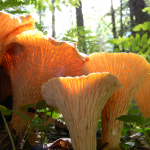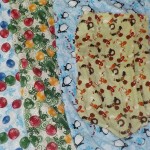Its being a busy autumn for a few reasons, a)Harvest Season, b)Autumn Blooms, c)Seed Season. This series will cover a bit of what you can do with each of these at home. First Harvest Season of fruiting trees.
This is a great time of year to take some time out of the day to pick some fruit in your neighbourhood. It can be surprising how many people have fruiting trees with no intention of harvesting the bounty. So all that you need to do is ask a neighbour who has a fruiting tree if it would be okay with them if you harvested the fruit – Most people would start out looking a bit skeptical, then end up giving a resounding yes because they don’t have to “clean it up”. In fact there are people who organize to make the most of this abundance.
Harvesting from just one fruiting tree can provide more than enough fruit for a weekend project.
Depending on space and resources, you can do one of five things with your new found local fruit.
1) Eat it fresh! (either in its original state or juiced)
2) Dehydrate it with an electric dehydrator, or a passive solar dehydrator (possibly another weekend project itself)
3) Freeze it
4) Can it
5) Ferment it (wine or cider anyone?)
Wild Harvesting
In my household we have permission to pick wildstuffs from a neighbour’s property, and since we live in an apartment we’ve opted for the easiest 3 options – fresh, freeze & dehydrate. And the fruit of choice in this area are Apples.

Wild apples can vary greatly in flavor – from a strong tart taste to a sweet gentle succulent flavor. Over the years I sample from the wild apples in the area and note which ones are most preferable in flavor. At the peak of the season I harvest from those trees.
To harvest we have a small wagon that we fill with reusable shopping bags and/or a box or two. From there we go over to the desirable fruit trees, pick the ones that are in descent shape on the ground and toss the others away from the bottom of the tree. After that one of us climbs the tree and shakes down the rest, going from segment to segment. After each segment is shaken, the climber picks the ripe fruit that refuses to fall and puts it into the bag they have on themselves. Going about it in this way saves a lot of time for the other pickers below as tossing the rotten or very damaged fruit away from the tree prevents going over the same fruit again and again when trying to pick up the recently shaken fruit.

As each bag fills up, put it in the wagon/box in the wagon. Once all full to your desired quantity head back home for the prep work. If unable to prep right away a breathable container for the fruit (cardboard box or cloth bag) in a dark cool place (like a closet, basement, hallway, or even under furniture) can have them keep for a few days or up to a week or two if they have bruises, for months if not bruised and adequately cool, breathable and dark. Our surplus, until prepped, is in a box in our unheated apartment hallway.

When prepping I do something a little different from conventional practice. I make sure I get the seeds for future planting. This is not a conventional practice because the seeds you plant do not guarantee that the resulting fruit will be like the fruit it came from. This is due to the pollen possibly coming from a very different tree that may be undesirable in flavor. Conventionally people graft stems or branches from desirable trees onto the bases of other apple trees, or use rooting hormones on the stems/branches and plant them directly for guaranteed desirable apples. Personally I like to encourage the natural process with minimal human intervention as possible, and so I collect seeds for future planting (are in the market for a home with some acreage to do market forest gardening). The plan is to grow the trees in a food forest ecosystem (see permaculture), make the least desirable fruit into cider, and the resulting trees be coppices for woodcraft and cooking. Over the years the most desired flavored fruiting trees are encouraged to propagate while the others are slowly weaned out of the food forest. It wouldn’t be out of the ordinary if they all ended up as cider apples; if so I may root stems.
Rooting A Stem
You can root stems by putting them in a willow twig tea solution. Either soaking the chopped willow twigs (the length between your knuckle and tip of your thumb) of this year’s new growth (are green or yellow of any willow tree) for a week or more (some recommendations are over a month); or boiling water and pouring it over the twigs and let it steep until the same time tomorrow.
Fill a container with the willow water and placing the snipped end of the stem in the willow water so that one third is covered and let it sit a few hours or more. When ready to plant, have a pre-dug hole with the bottom having loose soil/compost, and keep at least a hand’s width space on either side of the stem be filled with loose rich soil/compost. It helps to water it with willow water a couple of times.
Prepping The Fruit
To keep things running smoothing I lay out all the necessary equipment in position on the table first. That being a large bowl for the raw fruit, another large bowl for the excess that won’t be consumed AKA compost bowl, a chopping board, a small chopping knife, a peeler, a pan/tray for seeds, and the storage container/dehydrator tray.

The rest is pretty straight forward – peel, place peeling in compost bowl, chop each side of apple (avoid getting the hard seed casing – you eventually get the hang of how far you need to cut from the core to avoid it), then chop the corners that are left (The desirable fruit we collect are fairly small apples, so we try to get the most out of them with a bit of extra cutting), place fruit meat on tray/in storage container, break core, remove seeds to place on seed pan/tray, put core in compost bowl and repeat. Once the raw fruit bowl is empty you can take a bit of a break before filling it up and starting up again.
The peel could alternatively be left on, but I find most people don’t like that sort of toughness in their pie or fruit leather so I remove it. I plan on looking for ways to utilize the peels instead of composting them in the future.
The seeds are spread out (some prefer to use newspaper or the like to help it along) and left to dry over a day or more. Then store until you know where you want to plant them. More on that later…
Once you have your prepped fruit its time for the last step. For us that means freezing for pies, or dehydrating for winter snacking. Happy Harvest!
For more information on Community Food follow this link to the Food Page on the Official Ehoah Website.
















